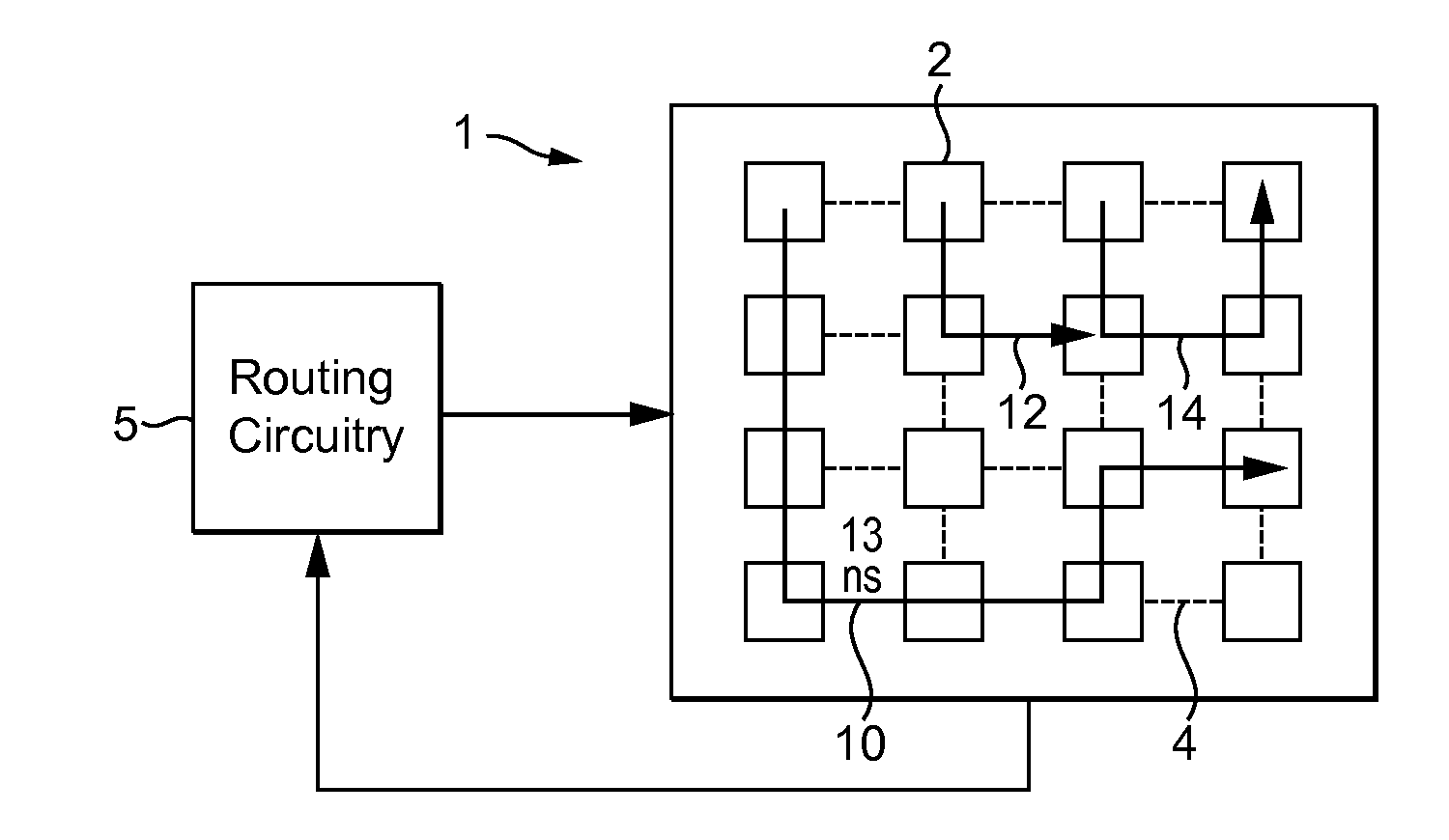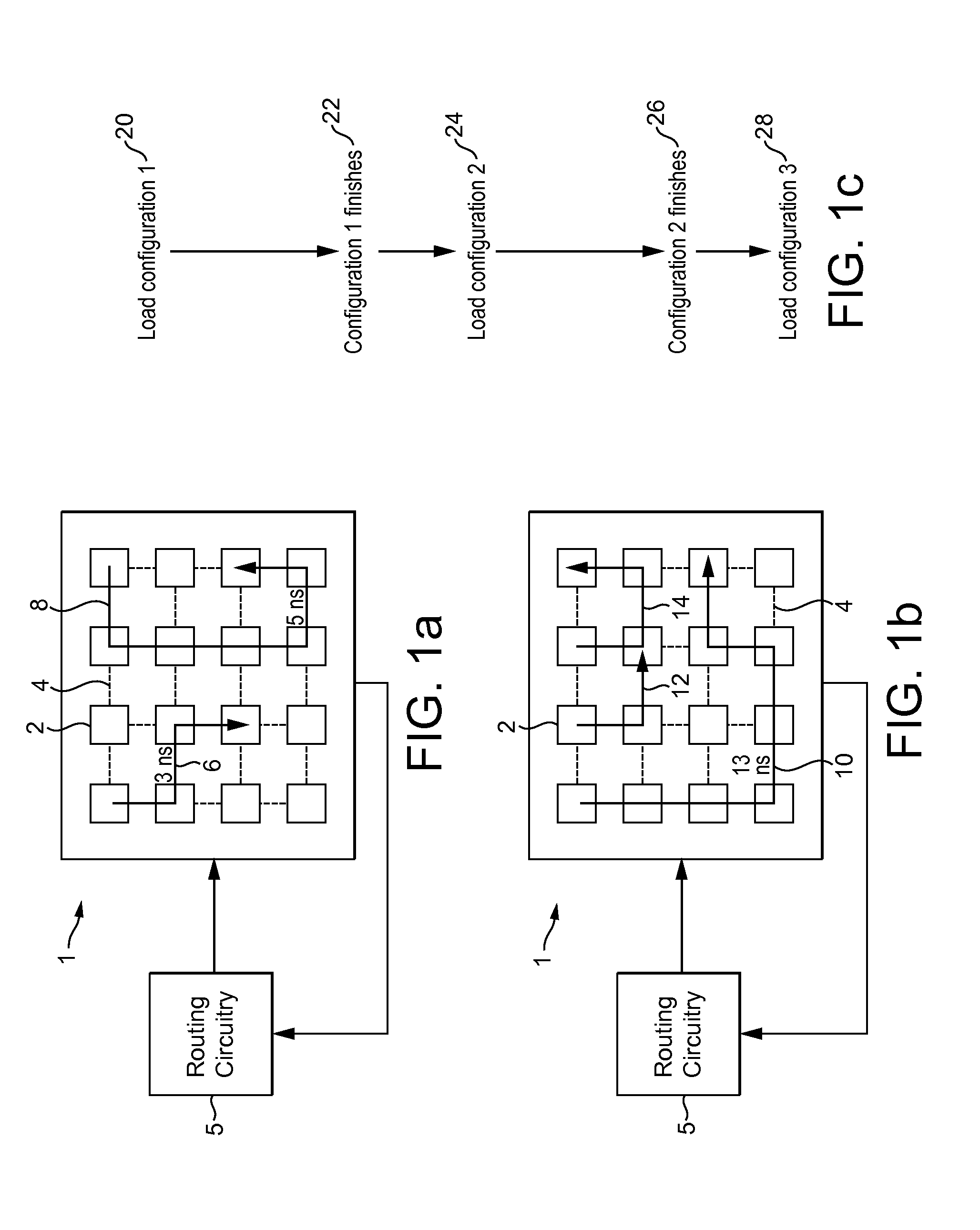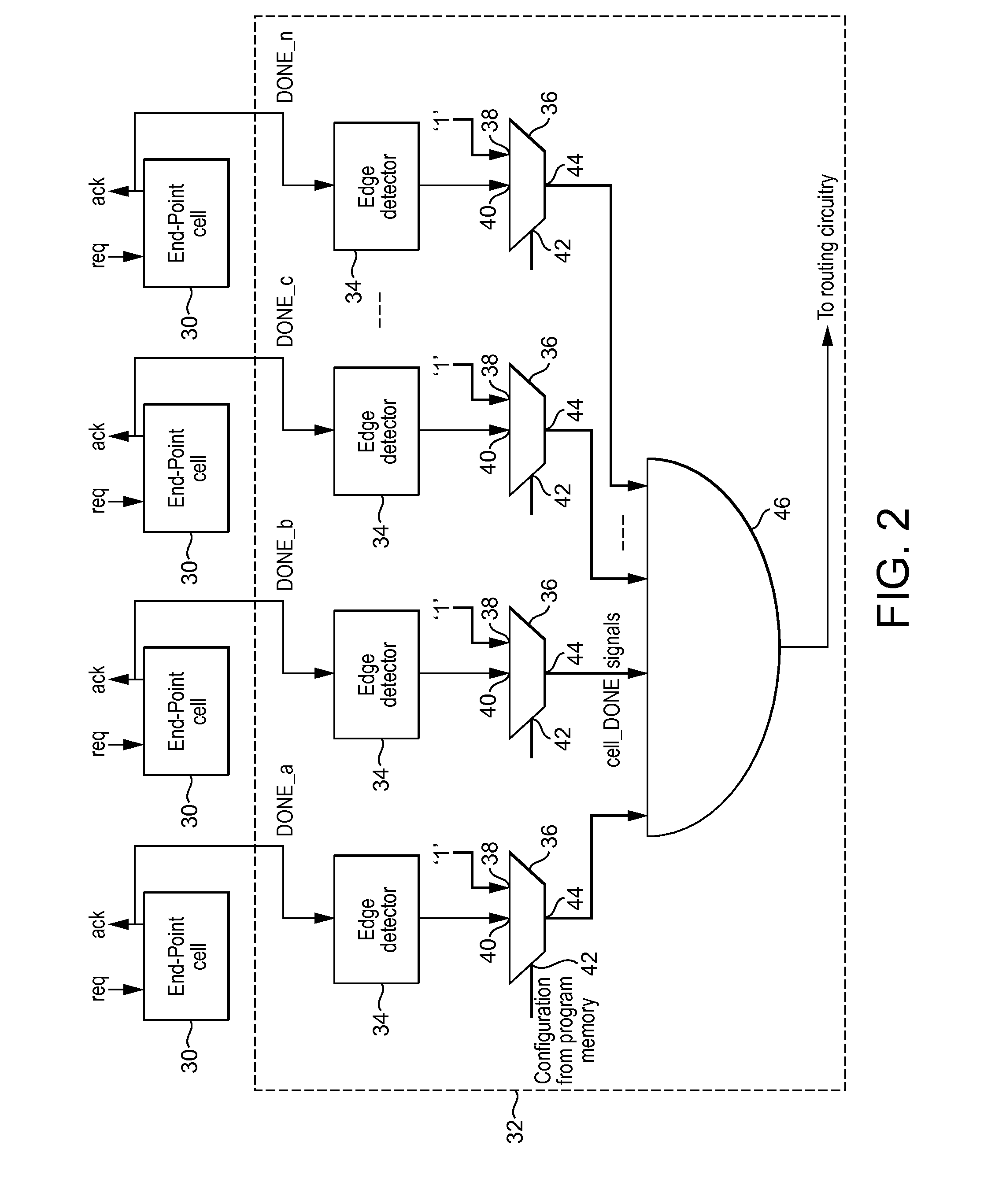Methods for operating and configuring a reconfigurable processor
a reconfigurable processor and processor technology, applied in the direction of program code transformation, multi-processor architecture, instruments, etc., can solve the problems of reducing the efficiency of the processor, propagation delay, and delay between the completion of signal processing, so as to improve the efficiency of the method, reduce the complexity and the effect of additional signal propagation tim
- Summary
- Abstract
- Description
- Claims
- Application Information
AI Technical Summary
Benefits of technology
Problems solved by technology
Method used
Image
Examples
example
[0189]FIG. 8 illustrates three signal processing paths—path 1, path 2 and path 3—from a routing netlist of a particular signal processing configuration determined by the routing module 49 of the compiler 48. FIG. 9 illustrates in dotted and bold lines within labelled boxes 101, 102 and 103 respectively the three signal processing paths 1, 2 and 3 mapped onto the processor array of operational cells 2 (of which a 6×4 array is shown) and the interconnect 4 (which interconnect 4, as shown, comprises a grid of programmable horizontal and vertical electronic connections extending between the operational cells of the array and a switch-box at each of the intersections between the horizontal and vertical programmable electronic connections). Each signal processing path 1, 2 and 3 has a critical path. The critical path of signal processing path 1 is:
PUM
 Login to View More
Login to View More Abstract
Description
Claims
Application Information
 Login to View More
Login to View More - R&D
- Intellectual Property
- Life Sciences
- Materials
- Tech Scout
- Unparalleled Data Quality
- Higher Quality Content
- 60% Fewer Hallucinations
Browse by: Latest US Patents, China's latest patents, Technical Efficacy Thesaurus, Application Domain, Technology Topic, Popular Technical Reports.
© 2025 PatSnap. All rights reserved.Legal|Privacy policy|Modern Slavery Act Transparency Statement|Sitemap|About US| Contact US: help@patsnap.com



